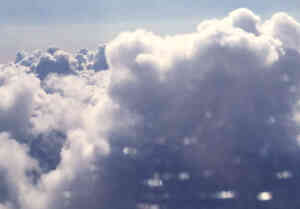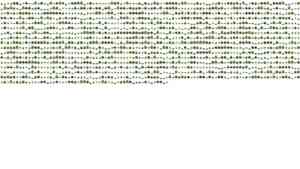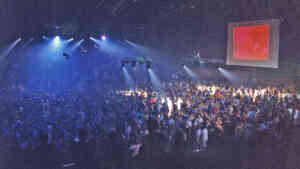Bodies 24/7

With the rise of technologies we are expected to be fast, flexible, adaptable, mobile and creative, like the emojis of microbes that have been travelling in the net through operational systems and social platforms changing their shapes and colors in between. Shifting from office workspaces to 48-hour techno clubs, from day-time jobs to night-shift taxi driving, changing driver profiles from one platform to another, ensuring online presence and gaining new job qualifications, transferring from one temporary job to joblessness - we are under the constant demand to be productive.
We are navigating between terminals and environments under precarious conditions. This navigation changes perceptions about life cycles of things, their interconnections, circulations and values during transformations. While time is being capitalized and turned into data, the value is being reconfigured, deducted, added and extracted during transformations, during changes of appearance or space, of being made and of being already made, in between becoming and decaying.
For instance, the information we contribute daily knowingly or unknowingly to various platforms and applications becomes more readable and usable for humans and algorithms and thus changes its value. Participating in this vast machine with our personal data we are creating a virtual “subconscious” of ourselves. You discover your secret late-night searches or walking destinations when you accidentally tap on your activity archives in search engines, in smartphones or applications as if you would remember your dreams in a conversation with a psychoanalyst. Then you get personal assistants in the face of applications whom you trust with your health checks, meal plans, schedules, bed time notifications, and hints to whom you should probably drop a message. We are all self-entrepreneurs now!
The knowledge from the Internet, and from any other locations is harnessed constantly and integrated into the knowledge economy. What would be the mechanisms of extraction of value if life disappears as we know, personally or collectively? What will be left will be images showing what has once been present, an inventory of dead objects that will outlive the observer, databases with our online traces that will outlive us. This extraction will include the archives of our images, shots made with smartphone filters, materials from our surroundings, our online traces and our fingerprints on the smooth screens of smartphones. How would their value be calculated and extracted from a pile of immeasurable data left with or without our intention? This junk data which is currently our carbon footprint may sometime in the future be found useful, or simply deleted.
Until then we are learning how to deal with technological invisible presence that carries out interventions in the most intimate details of our everyday life. Governance is carried out by checking, recording and simply seeing this life, being it with night-vision, radars, logs, cookies, satellites, whatever. Things that didn’t previously have economic or social value suddenly become technically possible to be seen. When new means are made available to see “new spaces, new scales, new traces, new crimes”, governance conforms to these new vision machines to observe and control whatever becomes available (1).
Tricking the surveillance programs inside office/home computers is performed regularly by workers whose working hours are counted automatically by tracking softwares. And vice versa, tricking specific restrictive situations in the immediate surroundings is performed by tapping on the smartphones.
What we daily perform is in fact telepresence - being in a place separate from our physical presence, most often what results is that everyone is isolated in their own virtual reality world. In the hope to save more time, what has been left to us is anxiety, panic, parties and portfolios for intimacy or for jobs. Precarization takes the form of an instrument of governance (2). This goes hand in hand with digitalization.
Digital technologies have facilitated a new kind of labour for digital platforms and services that are highly unregulated and mostly exclude any kind of social relations. The labour required for digital technologies, the processes of making behind the digital economies, natural resources required for producing hardwares, digital nomads, the anonymous figures of programmers, their modes of production and material conditions of their work are mostly hidden from sight.
The technological know-how did not erase systematic disparities in the division of labour and has even deepened them (3). The idea of “cognitive labor” often overshadows other forms of waged and unwaged work, the “underdevelopment” of some sectors of production, and the out-of-sight aspects of cognitive labour.
The cognitive labour itself often depends on outsourcing. During recent years there has been a significant proliferation of tech companies and local branches in less economically advanced countries that focus on outsourced labor. Some tasks are transferred to low-wage workers in these countries. 24/7 call centers for customers operate from different geographies working in time-zones other than the ones they inhabit. These are workers in complete telexistence.

Movements between environments from time to time also create disruptions and potentialities. At least that’s how erased memories, viruses and logs still may reappear from time to time here and now, random clicks can take you where new threads are being weaved, shooting in and out, dissolve into our bodies, create illusions, fantasy dreams and even nightmares, stick on our screen surfaces, with their forgotten faces trigger our imagination, suggest new constellations, threaten to disappear forever, sometimes like viruses reemerge no matter how we try to delete them, erase and once again shift delete.
These threads move through operational systems, through organisms, through ontologies and skins. Objects entangle with our bodies and create hybrid becomings that are a bit rusty, a bit fleshy, a bit metal, a bit digital and polished, that keep on consuming and feeding on each other. We stop seeing commonplace objects as they become too close to our sight and in fact part of ourselves. Our flesh transforms into a hybrid structure that bears the traces of some things or bodies that have been here.
Images go through filters, bodies look like filters themselves, flesh goes through surgeries after beauty ideals or wars, human contact through skin transfers to digital screens and digital screens transfer to human skin tissues. We are being projected to video chat rooms and reduced to programs and schedule hours. However, what we desire is “extended reality”, travelling as an extension, hair extensions, body part extensions, drugs as extension, tattoos and nail extensions, trying frantically to create new intensities with our bodies and with others or to revive ones that we have once had.
- Notes and references:
- 1. Benjamin H. Bratton, The Stack: On Software and Sovereignty. Cambridge MA: The MIT Press, 2016
- 2. Isabell Lorey, State of Insecurity: Government of the Precarious. Translated by Derieg, Aileen. London: Verso, 2015
- 3. George Caffentzis / Silvia Federici, ՚՚Notes on the edu–factory and Cognitive Capitalism՚՚, transversal, “Knowledge Production and Its Discontents,” 2007


